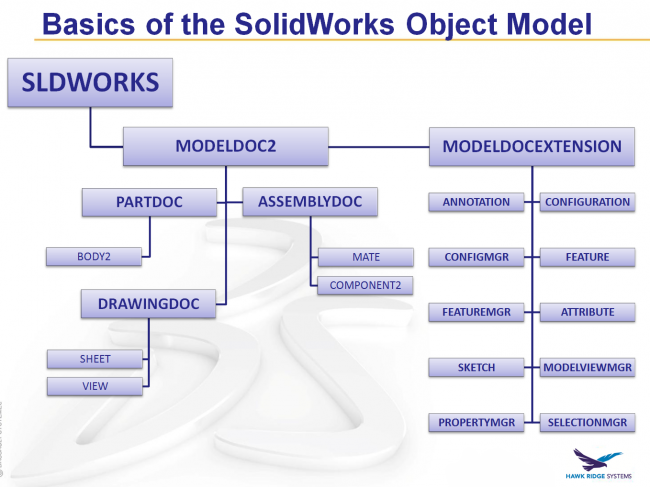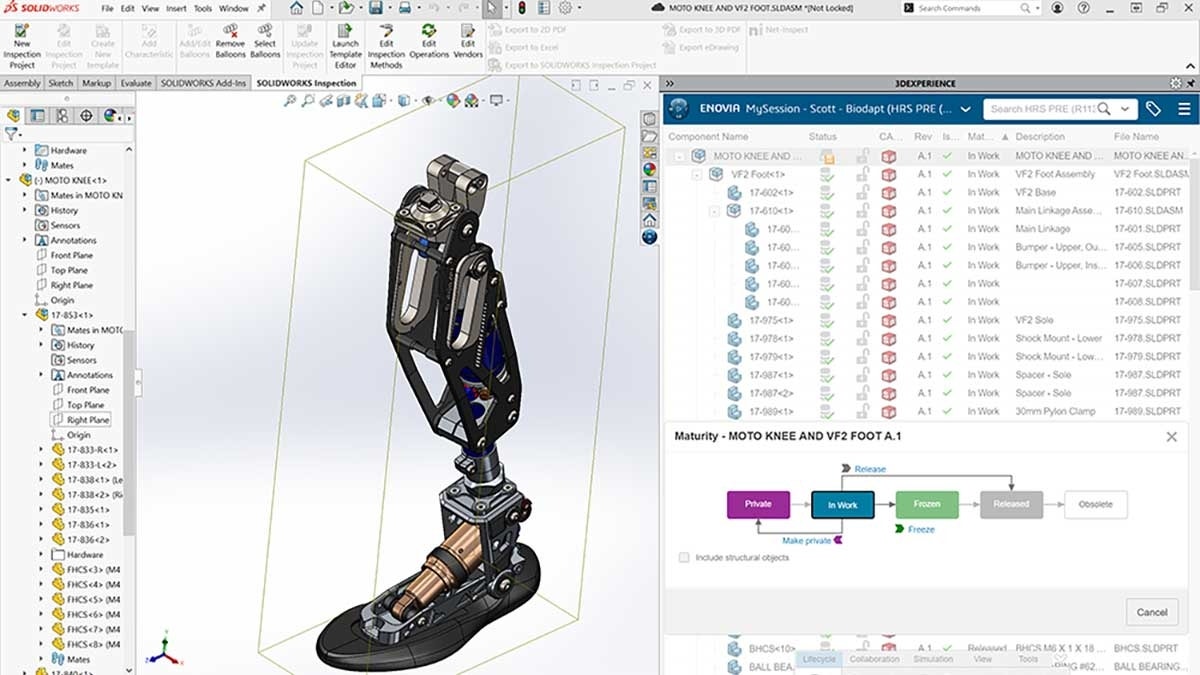
In the
previous post
of this blog series on the
SolidWorks API, we discussed the four lines of code that get generated automatically
whenever we start a new macro. So where do you go from there? Most commonly,
we’ll then connect to the active SolidWorks document or open a new or existing
SolidWorks document. We can access these things using statements of this type:
swApp.ActiveDoc
swApp.NewDocument(parameters)
swApp.OpenDoc6(parameters)
We’ll discuss parameters in a later post, but notice that before we call each
function, we specify “swApp.” In order to access functions, we need to specify
to the code where these functions are coming from. In the case of these first
few functions, they all belong to the top level SolidWorks application.
Usually, you’ll also want to do something with the document, such as get some
information about the geometry, add custom properties, or traverse the feature
tree. Thus, it’s helpful to store the newly created/opened/accessed document
into a variable. Our statements would then look like this:
Dim swDoc As ModelDoc2
Set swDoc = swApp.ActiveDoc
Recall from the previous post that the “Dim” statement is used to declare a
variable in which to store some type of data (in this case, a ModelDoc2
object), and that swApp is the variable commonly used to store a pointer to
the SolidWorks application.
In this case, what we’re doing is declaring the swDoc variable as a ModelDoc2
object (an umbrella object that encompasses parts, drawings, and assemblies)
and then taking whichever document is currently active in SolidWorks and
assigning its address to the swDoc variable. By declaring swDoc as a ModelDoc2
object, we have access to all the functionality defined in the IModelDoc2
interface (see the API Help File and browse to SolidWorks API Help ->
SolidWorks.Interop.sldworks Namespace -> Interfaces -> IModelDoc2).
The SolidWorks Object Model extends far, far beyond what is shown here, but it
is helpful to have a visual representation of the basic structure. The
implication of the Object Model’s structure is that we have to access features
through the specific interfaces that are defined by the API.
For example, under the IModelDocExtension interface, there is an
“InsertBomTable2” method that creates a Bill of Materials table in an assembly
or drawing document. However, we can’t just drop “InsertBomTable2” into our
code and expect the program to figure out what we want. We have to start from
the “SldWorks” application object, then go to a ModelDoc2 object, then go to
that object’s ModelDocExtension interface, and then finally call the
InsertBomTable2 method. The actual code to do this would look something like
this:
Dim swApp As SldWorks.SldWorks
Dim swDoc As ModelDoc2
Dim swDocExt As ModelDocExtension
Sub main()
Set swApp = Application.SldWorks
Set swDoc = swApp.ActiveDoc
Set swDocExt = swDoc.Extension
swDocExt.InsertBomTable2 parameters
End Sub
Actual execution of the above code would require proper parameters to follow
the swDocExt.InsertBomTable2 function call. Again, we’ll talk about how to
figure out the parameters of functions from the Help file in a later post.
If you’re interested in the SolidWorks API, make sure to check out the “Introduction to the SolidWorks API” webinar.
See the previous posts from this series:
Getting Started with the SolidWorks API – Part 1
SolidWorks API Building Blocks
– Part 2




